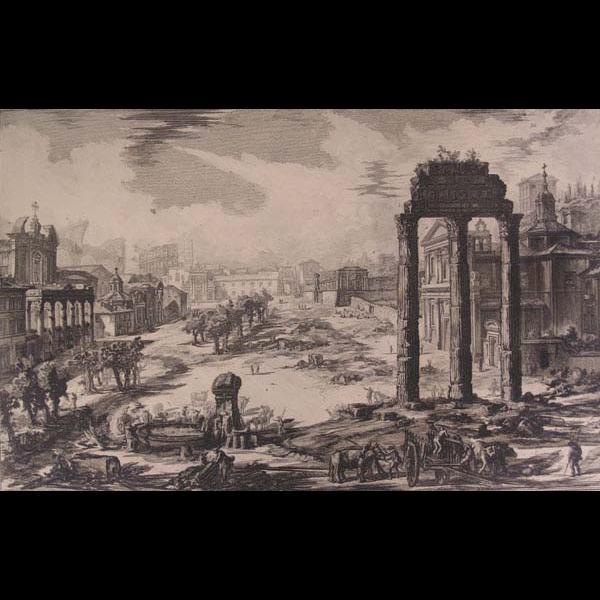Rome during the Grand Tour

Giovanni Battista Piranesi, Veduta di Campo Vaccino, plate 82 from the series "Vedute di Roma" (Views of Rome), 1772, (Davis Museum)
Rome was the main reason why many tourists went on the Grand Tour. It was a Classical city, but it still offered the modernity of the baroque, especially with work by artists such as Carlo Dolci and Gian Lorenzo Bernini. Even as the Roman baroque became less and less popular in the second half of the eighteenth century in Europe, excavations of the. Therefore, it remained relevant for the tourists and “ensure[d] that Rome was culturally recreated.”1 In addition, Rome became a well-established tourist city which catered to and depended on tourists for the success of its economy. Rome was unlike any other city-state in Italy because of its religious qualities as a Papal state. The most interesting activities were reserved for Catholic tourists who would know to visit in time for the many religious festivals. This often ended up working against British tourists who wanted the full view of the city.2 In addition to observing the city, tourists did a bit of collecting. They would purchase statues and copies of the finest paintings since the most famous paintings were often not for sale. When no statues or paintings were acquired, tourists brought home alternative souvenirs. “When an English gentleman reached home, if he had no statues, he often had a crate of hacked off fragments of the Roman Forum and other chunks of classic marble, which he would have made into a polished table top bound around in Bronze.” 3 The Grand Tour enabled the movement of ideas, objects and antiquities from Rome to the rest of Europe although it was not always ethical.
__________________________________________________________
1. Jeremy Black. Italy and the Grand Tour. (New Haven: Yale University Press, 2003), 47
2. Ibid., 50
3. Paul F. Kirby, The Grand Tour in Italy, 1700-1800 (New York: S. F. Vanni, 1952), 95.